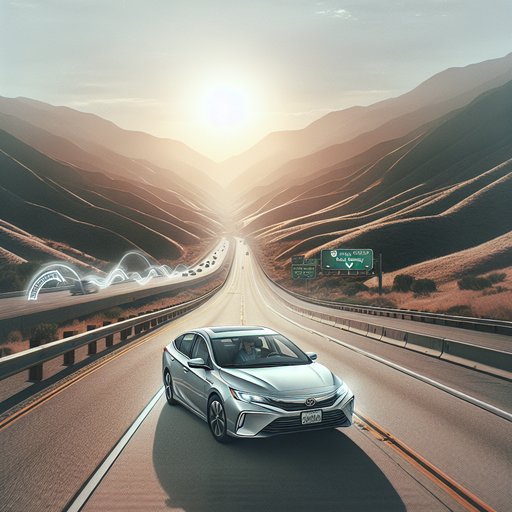
We logged more than 700 miles in a 2025 Camry Hybrid XLE to judge its long-haul comfort, real-world economy, and driver-assistance performance across interstates, two-lane highways, and a mountain pass in summer heat.
Our test car was a front-drive XLE on 18-inch all-season tires, powered by Toyota’s 2.5-liter Atkinson-cycle four paired with a hybrid system and eCVT. Output is rated at 225 hp (FWD), with EPA figures in the high 40s to low 50s mpg depending on trim. We set tire pressures to 35 psi cold, loaded two adults plus weekend luggage, and ran with adaptive cruise set between 70–78 mph as conditions allowed. Ambient temps ranged from 58°F at elevation to 95°F in the valley.
The loop included steady 6–7% grades and long, gusty crosswind sections. We used Normal drive mode for most of the trip, toggling Eco in heavy traffic and Power when merging. The car rode on fresh OEM rubber, and we verified odometer accuracy against GPS (within 1%). Seat comfort is a strong point.
The XLE’s power-adjustable driver’s chair with lumbar support and optional ventilation kept fatigue at bay after three- to four-hour stints. Cushion length is adequate for taller drivers, and the backrest provides even support without hot spots. Cabin storage is generous, with a deep center bin and usable door pockets. Visibility is good forward and to the sides; the sloping rear glass and thick C-pillars make the blind-spot monitors and high-res backup camera valuable in tight lots.
Ride quality is composed, with the TNGA-K chassis filtering out sharp impacts while keeping body motions in check over freeway undulations. On coarse-chip pavement, tire roar rises, but wind noise remains low; conversation at 75 mph is easy without raising voices. The hybrid system is unobtrusive at steady cruise—engine revs dip low and the eCVT avoids droning unless you ask for full-throttle climbs, where it will hold 3,500–4,000 rpm briefly. Crosswind stability is solid, aided by gentle steering weighting on-center.
Performance is sufficient for confident passing. At sea level, 50–80 mph merges are brisk enough, and on 6% grades the hybrid’s electric assist fills in torque so you don’t need to plan far ahead. Brake feel is natural, with smooth regen-to-friction blending on long descents and no hint of fade. Over the full trip we saw 49 mpg indicated and 47 mpg calculated at the pump, delivering roughly 600 miles between fuel stops.
Toyota Safety Sense 3.0’s adaptive cruise and lane tracing reduce workload; it tracks true in gentle curves but asks for more steering input on tighter sweepers. The 12.3-inch infotainment with wireless CarPlay stayed connected, and the optional JBL audio has clean midrange at highway volume. Practicality is excellent: the trunk swallows two large rollers plus duffels, and the 60/40 split-fold expands space for longer items. Dual-zone climate handled 95°F sun without running the fan loudly, and seat ventilation was a welcome upgrade.
Rear-seat legroom is adult-friendly for a couple of hours, though the center seat is best for short hops. LED headlights provide a wide, even low-beam spread; automatic high-beams respond quickly without dazzling oncoming traffic. Overall, the 2025 Camry Hybrid is an easy recommendation for road-trippers prioritizing comfort, low running costs, and fuss-free tech. Opt for 18-inch wheels for the best ride/noise balance, and stick with FWD unless you truly need e-AWD traction—the latter trims trade a touch of efficiency.
If you want more isolation and power, a midsize SUV will coddle more, but it won’t match the Camry’s range and fuel thrift on a long haul.












